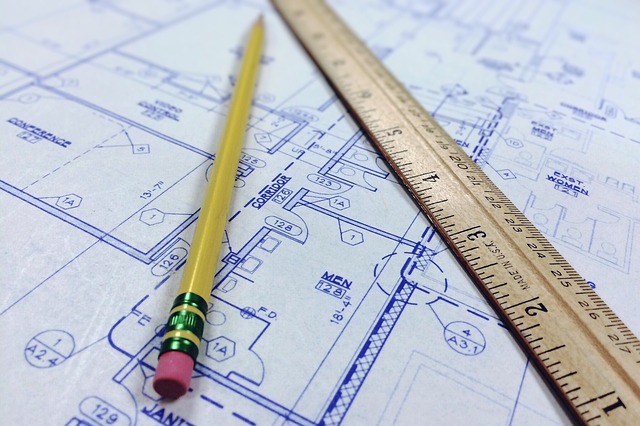Architecture and the need for innovation
Creating architecture is a role that has continually evolved.
Historically, design and construction were typically undertaken by the local artisan, and it wasn't until the 18th century that the role of the 'architect' diverged from that of a craftsman.
In the early-19th century the Institute of British Architects was formed in London to promote and direct the education of architects. It was later renamed the Royal Institute of British Architects (RIBA) and it still operates under that name today, alongside other architectural institutes such as the Chartered Institute of Architectural Technologists (CIAT).
One way or another the role of the architect has had to change in relation to industry innovations. The introduction of the pencil in the late 16th century along with the earlier introduction of paper in Europe allowed for the production of pre-construction drawings. Later, the specialisation of the trade led to innovations around the drawing board such as the introduction of parallel motion, but the availability of personal computers and the advent of computer aided design (CAD) has subsequently led to their demise. Today the majority of drawings are drafted using polylines and layers as opposed to pens and razor blades.
Architects have always seen change as an opportunity. This can be seen in the evolution of the role and its migration to the T-shaped professional model, where the architect is no longer solely a master of their own profession, but knowledgeable about other construction design professions, document control procedures, CAD management, the build and installation process, and more recently data analysis and software application development.
Now with the introduction of efficiency gains and automation brought about through the application of the Building Information Modelling (BIM) process, architecture has another opportunity to innovate, if sufficient leadership can be demonstrated.
Work by BRE Academy, in collaboration with CIAT, the Construction Industry Training Board (CITB), the Institute of Environmental Management and Assessment (IEMA), and Ecobuild, has demonstrated a skills gap within the industry around technology and digital aspects of design and construction, with BIM and smart technology skills identified as those most in need. The survey suggests that architectural professionals who excel at data analytics and software development may be early adopters of the professions future profile. However, there is a conflicting view.
Within the construction industry, architectural roles have always been the most 'human', dealing with relationships, negotiations, and active listening. Indeed, research by the World Economic Forum identifies these traits as among the most desirable skills for future professionals including; complex problem solving, critical thinking, creativity, people management, and coordinating with others. Due to its mastery of such skills, the role of the architect or technologist has been identified by the BBC as highly unlikely to be automated.
So then there is a decision to be made: when considering the future role of the architectural professional within construction, should it move towards the 'man', or the 'machine'?
This article was created by --BRE Buzz. It was taken from Embracing innovation in architecture by Dan Rossiter, published in April 2016.
[edit] Related articles on Designing Buildings Wiki:
- Architect.
- Boardroom to building site skills.
- BRE articles on Designing Buildings Wiki.
- Computer aided design CAD.
- Government plans to put UK at front of global innovation race.
- How to become an architect.
- Skills shortages lead to wages rise.
- Shaping the Future of Construction: Inspiring innovators redefine the industry.
- RIBA.
- The architectural profession.
Featured articles and news
The benefits of engaging with insulation manufacturers
When considering ground floor constructions.
Lighting Industry endorses Blueprint for Electrification
The Lighting Industry Association fully supports the ECA Blueprint as a timely, urgent call to action.
BSRIA Sentinel Clerk of Works Training Case Study
Strengthening expertise to enhance service delivery with integrated cutting-edge industry knowledge.
Impact report from the Supply Chain Sustainability School
Free sustainability skills, training and support delivered to thousands of UK companies to help cut carbon.
The Building Safety Forum at the Installershow 2025
With speakers confirmed for 24 June as part of Building Safety Week.
The UK’s largest air pollution campaign.
Future Homes Standard, now includes solar, but what else?
Will the new standard, due to in the Autumn, go far enough in terms of performance ?
BSRIA Briefing: Cleaner Air, Better tomorrow
A look back at issues relating to inside and outside air quality, discussed during the BSRIA briefing in 2023.
Restoring Abbotsford's hothouse
Bringing the writer Walter Scott's garden to life.
Reflections on the spending review with CIAT.
Retired firefighter cycles world to raise Grenfell funds
Leaving on 14 June 2025 Stephen will raise money for youth and schools through the Grenfell Foundation.
Key points for construction at a glance with industry reactions.
Functionality, visibility and sustainability
The simpler approach to specification.
Architects, architecture, buildings, and inspiration in film
The close ties between makers and the movies, with our long list of suggested viewing.
SELECT three-point plan for action issued to MSPs
Call for Scottish regulation, green skills and recognition of electrotechnical industry as part of a manifesto for Scottish Parliamentary elections.
UCEM becomes the University of the Built Environment
Major milestone in its 106-year history, follows recent merger with London School of Architecture (LSE).
Professional practical experience for Architects in training
The long process to transform the nature of education and professional practical experience in the Architecture profession following recent reports.
























